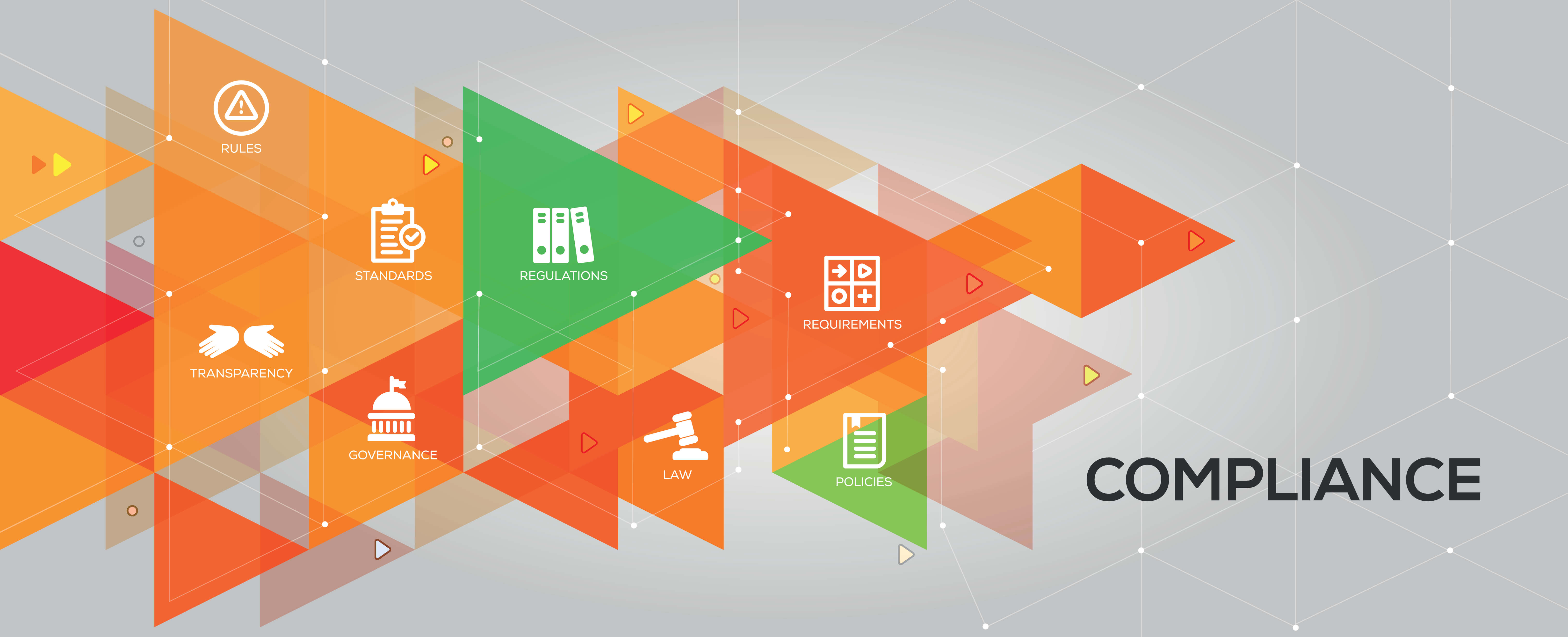The Benefits of Automated Compliance

Compliance Definition as it is
We define compliance from several perspectives. Regulatory compliance usually takes the first place. Compliance is not only a regulatory issue. It is true that regulations are growing in volume and complexity. More than that. They are prone to continuous change. Maintaining regulatory compliance becomes a growing burden for the organization regardless of size and type.
At the same time, both regulatory compliance and corporate compliance open the opportunity to create a competitive advantage. Security is the number one question customers ask before giving their data. A strong compliance foundation is evidence of a provider’s reliability. It is proof of a security-centric attitude and high business culture. It strengthens customers’ trust, loyalty, and retention.
However, the compliance program implementation and management stages are often too complicated distressing an organization’s resources. Handling many industry-specific standards, regulations, and policies simultaneously brings silos, human errors, gaps, and overlapping. Data coming from multiple sources stockpile in fragmented and dispersed conditions. Soon, the whole compliance machine becomes slow and inefficient.
Modern automated solutions successfully address these issues. Let us see what they have under the bonnet.

Compliance on a Fast Track
Today, there is a variety of compliance software and solutions differing in functionality and application scope. They range from workflow management tools to complex AI-driven systems.
The fundamental principle of automated compliance lies in consolidating data flows and processes in one control center. It provides all data visibility and full control over the compliance management system.
Depending on its functional scope, the solution enables compliance monitoring, instant security and compliance check, full or selective risk analysis, compliance planning, compliance auditing, and generating customer-specific reports in a click.
Now, about how it works. First, the system is populated with the initial data, compliance requirements, etc. The monitoring unit processes it and visualizes the user information on the dashboard. The variety of user information varies depending on the specific needs. It includes, but is not limited to applied IT compliance concepts, requirements, system configurations, IT asset inventories, tasks, responsible persons, performance, etc.
The system consolidates and stores information and related conditions. When an operator introduces any change to some block, the system updates all related blocks automatically. Then the monitoring unit displays the updated user information on the dashboard.
The dashboard feature is configurable. The compliance coordinator can configure displaying any customer-specific information. For example, the option can be to display the compliance status of one or several individual divisions or the entire organization.
What you get as a Result
The first notable experience of using automated compliance software is reduced cost and increased performance efficiency. Organizations receive the released time, operation capacity, and labor to aim them at other critical areas.
Secondly, you eliminate the risk of severe penalties for privacy incompliance due to low performance, mismatches, and human errors. The fines for privacy breaches stipulated by the GDPR may well make organizations go out of business. Given that the mandatory requirements undergo constant updating and amending, comprehensive compliance automation is of crucial importance for the financial, healthcare, and public sectors.
Many organizations handle sensitive information. If a breach occurs, financial damages can be crucial. Besides, the accompanying reputational damages often overweigh the direct losses.
Summary of Compliance Automation Benefits
- Saved time and cost on every stage of the compliance process enabling the organization to focus on more strategic areas;
- Increased decision-making power due to instant real-time risk assessments;
- Uniformed compliance process across the entire organization;
- Accurate and efficient management of the organization’s potential risks and vulnerabilities;
- Minimized number of incompliance incidents;
- Consolidated data in one control center;
- Automated auditing and reporting process.
Challenges
Compliance automation offers great benefits. They delegate redundant processes to machines, save cost and streamline compliance management system processes with the next-to-zero chance for human error.
However, there are several specifically challenging areas. For example, organizations, which implemented automated solutions, have to collect and store much more data than before.
Compliance management solutions still require much human attention and scrutiny. It is especially true for the implementation stage. The compliance team must persistently verify all system features and components work as anticipated. A single wrong input by the compliance assistant can launch an avalanche effect. Then, crucial errors pile up if overlooked.
A good recommendation is:
- Checking the automated controls for correct performance regularly.
- Making sure that compliance management system processes run according to design.
- Since timely service and updates are of crucial importance, dealing with only proven providers.
Get Advice from Compliance Automation Experts
There is no perfect automated solution. No compliance software satisfies every user in every way unless it is a magic stick. They are designed differently to cater to different target audiences. The basic benefits for all are obvious: cost-saving, enhanced efficiency, increased performance, and lower risk.
Some universal solutions can host varieties of pre-integrated standards and features to manage governance, risk, and compliance altogether. They are engineered to serve different industries with an option for numerous extensions. Others take care only of the basics: information security compliance and privacy. They are best suited to control and manage data collection, processing, and storage procedures.
The starting point for the organization is to define its individual compliance needs and scope. Then you can outline the corporate compliance program and consider the most appropriate compliance techniques. Select solutions capable of streamlining compliance processes in the best possible way, from the implementation of the compliance management system to get the certificate of compliance.
With 2000 engineers and vast hands-on experience in automation, compliance, and security fields, Infopulse GmbH builds innovative solutions integrated with high-end security and compliance services. We provide compliance consulting to over 1200 customers worldwide.
If you need advice on your individual compliance program or compliance training, contact our experts. We know how to efficiently address your compliance issues, simplify the compliance process and build a strong compliance culture.
Try Compliance Aspekte For Free
Book a 1-2-1 Live Demo and Obtain a 3-months Non-binding Trial
